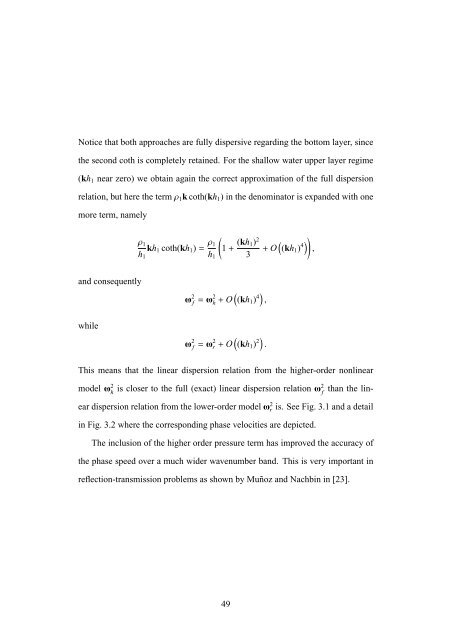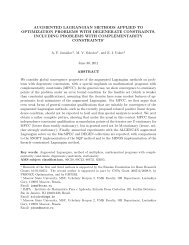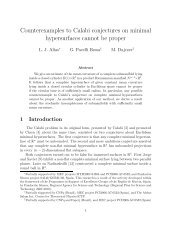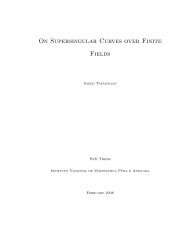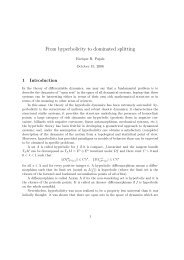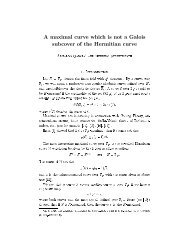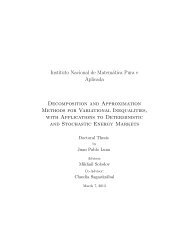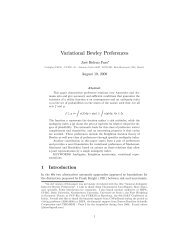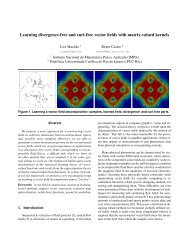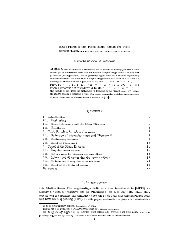a reduced model for internal waves interacting with submarine ...
a reduced model for internal waves interacting with submarine ...
a reduced model for internal waves interacting with submarine ...
Create successful ePaper yourself
Turn your PDF publications into a flip-book with our unique Google optimized e-Paper software.
Notice that both approaches are fully dispersive regarding the bottom layer, since<br />
the second coth is completely retained. For the shallow water upper layer regime<br />
(kh 1 near zero) we obtain again the correct approximation of the full dispersion<br />
relation, but here the termρ 1 k coth(kh 1 ) in the denominator is expanded <strong>with</strong> one<br />
more term, namely<br />
ρ 1<br />
kh 1 coth(kh 1 )= ρ (<br />
1<br />
1+ (kh 1) 2<br />
+ O ( (kh 1 ) 4)) ,<br />
h 1 h 1 3<br />
and consequently<br />
ω 2 f=ω 2 h + O( (kh 1 ) 4) ,<br />
while<br />
ω 2 f=ω 2 r+ O ( (kh 1 ) 2) .<br />
This means that the linear dispersion relation from the higher-order nonlinear<br />
<strong>model</strong>ω 2 h is closer to the full (exact) linear dispersion relationω2 f<br />
than the linear<br />
dispersion relation from the lower-order <strong>model</strong>ω 2 r is. See Fig. 3.1 and a detail<br />
in Fig. 3.2 where the corresponding phase velocities are depicted.<br />
The inclusion of the higher order pressure term has improved the accuracy of<br />
the phase speed over a much wider wavenumber band. This is very important in<br />
reflection-transmission problems as shown by Muñoz and Nachbin in [23].<br />
49


